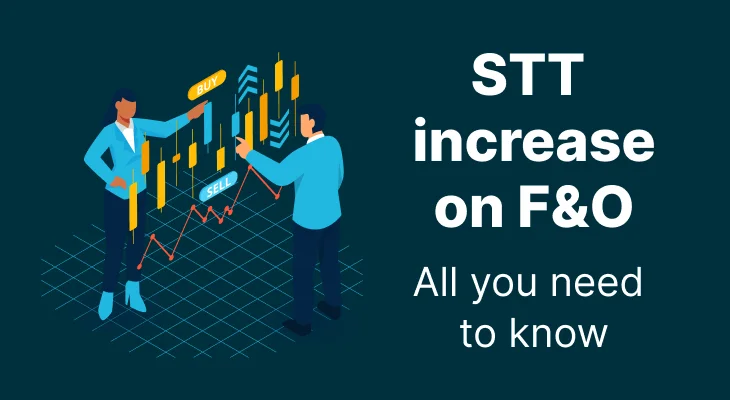
Table of content
STT increase on F&O - All you need to know
The Union Budget 2024 proposes to hike securities transaction tax (or STT) on futures and options. There was anticipation among traders that there would be other steps taken to reduce the growth in volumes of future and options in India. But the government has refrained from taking any steps like re-categorising trading income and levying a higher tax rate, among reported moves.
So let us look at how the higher STT will work.
Marginally higher
The proposed increase in STT rates is only for future and options contracts. For futures, the STT levy the proposed rate is 0.02% of the contract value traded. And for options, it is 0.1% of the option premium.
| Type | New STT rate | Old STT Rate |
|---|---|---|
| Futures | 0.02% (of value at which futures contract is traded or contract value) | 0.0125% (of price at which futures contract is traded) |
| Options | 0.1% (of the option premium) | 0.0625% (of the option premium) |
While there was an initial pullback in the market on July 23 because traders feared the worst during the Finance Minister’s speech. After the details started trickling in, it was clear that any incremental impact on traders’ bottom line would be marginal.
The higher STT will come into effect from October 1, 2024.
Why did the government raise STT on F&O?
The future and options (F&O) combined turnover on the two main Indian stock exchanges—BSE and National Stock Exchange—was rising rapidly. The combined F&O turnover of the two exchanges made up for more than 80% of the global turnover in April 2024, according to data from the Futures Industry Association.
The Securities Exchange Board of India has also planned to roll out measures to slow the growth in F&O trading by increasing margin requirement and reducing the stock exchanges’ ability to rollout weekly settlement options contracts per benchmark index to just one.
The government on its part also wanted to cool the rapid growth of F&O volumes but didn’t take any drastic measures like the rumored higher tax rates on F&O trading activity. The higher STT is a way of increasing the cost of trading in future and options, without causing large-scale disruptions. STT is imposed on futures and options trades whether the trader suffers a loss or makes a profit. So, it is an upfront cost of trading on the stock exchanges.
How much will a trader be impacted by this?
The incremental impact of the proposed increase in STT on future and options trading is expected to be minimal. For example, if you sold Nifty Futures worth ₹10,000. Then earlier you would have paid ₹1.25 as STT. Under the new proposed rates, the STT would be ₹2.
In case of options, if you sold put options with a premium of ₹10,000, the STT would have been ₹6.25. Under the newly proposed rates, the STT would be ₹10.
The net impact of the increased STT will most likely be reduced high frequency trades. These scalp trades, that try to benefit from small price changes, are the ones that will be impacted due to small changes in upfront costs like STT.







